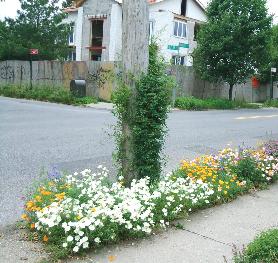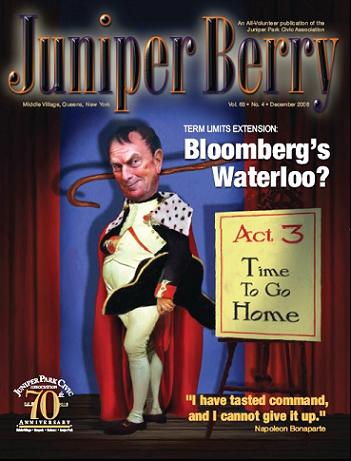If you’ve got a green thumb and looking to be creative it’s time to plan for the 2009 growing season. How about transforming and beautifying that otherwise dull curbside lawn strip into a curbside garden? Flowering curbside gardens are indeed beautiful – they appeal to the esthetic, they soften the hard edges of an otherwise concrete landscape, they present to the community (and your neighbors) that you indeed care. They are also biologically diverse by the habitat that they create. Once referred to as Garden City, pockets of tasteful horticulture still abound in Flushing and are grand ideas for beautification projects in communities elsewhere.
For a small investment, a variety of low growing and low maintenance annuals and repeat blooming perennial herbaceous plants are available at the local garden center or perennial mail-order website. How does one plan for and create a curbside garden? During the upcoming winter months start your project with plant research by exploring the numerous websites on perennials.
Don’t be overwhelmed by the 3.8 million available hits when you Google “Perennial.” (e.g., bluestoneperennials.
com, backyardgardener.com, Dr. Leonard Perry’s Perennial pages – uvm.edu/~pass/perry, senecahillperennials.com). Searching these websites and exploring plant types is part of the planning for your garden. In late winter-early spring when the ground has thawed or some favorable weekend thereafter is when you need to physically remove the lawn of your curbside strip or perhaps smaller sections of it just for starters. Create a planting bed rich in compost that allows for rapid establishment of annuals and perennials and loamy enough to provide for good drainage.
If one is not too certain about planting arrangements and color combinations then I suggest a visit to the New York Botanical Gardens in the Bronx next spring/summer to view spectacular arrangements of hundreds of species of native and introduced perennial plants in their combinations with each other and with trees and shrubs. The source for good perennial bargains were actually found at the end of the growing season when nursery and garden centers want all their plant material gone. However the best bargains were found by talking to green-thumb neighbors who may be more than willing to swap plants. And you may also have found a new friend.
The curbside garden on Parsons Boulevard and Poplar Avenue is in comparison to the increasingly common, ill-maintained properties that have blighted many communities (such as on the opposite side of street in this photo). I find lawns wonderfully verdant and easy to maintain but very boring and biologically dull. In this curbside example, the climbing vine Clematis not yet in full bloom is a choice perennial vine to cover an unsightly utility pole or fence over a more ubiquitous and invasive Honeysuckle (Lonicera) or English ivy (Hedera helix). Over the growing season the flowering perennials were a constant source of color and beneficial insect activity. Smaller, less imposing and more manageable planting areas such as curbside tree pits can also add a subtle touch of color. The transplant of plugs of Ajuga spp. (Bugleweed) from elsewhere in my garden (or exchanged with your neighbors) into the tree pit of this Platanus occidentalis (London Planetree) is unlikely to interfere with the growth of a large established shade tree. Yet abundant and dense planting of perennials into tree root zones is not encouraged. In fact, young trees that are attempting to establish themselves require minimal competition from other vegetation.
A highlight of the curbside garden is the April through August flowering California poppy. A few examples are provided of low-growing perennials for a curbside garden that require minimal maintenance and irrigation once they have become established.




